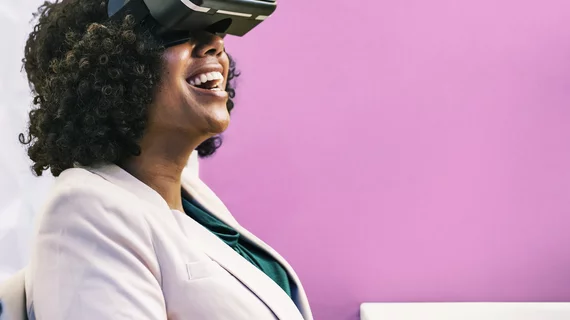Hologram tech helps interventional radiologists treat liver tumors with confidence
Interventional radiologists have successfully used an augmented reality tool to quickly and safely deliver cancer treatments to the liver, according to new research released Sunday.
The initial in-human pilot study had doctors perform percutaneous thermal ablation of solid liver tumors with Microsoft’s HoloLens technology. Using a three-dimensional view inside of patients’ bodies, physicians burned away tumors while avoiding vital organs and achieved results on par with standard imaging-based approaches.
Lead author Gaurav Gadodia, MD, a radiology resident at the Cleveland Clinic, and colleagues presented their abstract virtually during the Society of Interventional Radiology's 2020 Annual Scientific Meeting on June 14.
"Converting traditional two-dimensional imaging into three-dimensional holograms which we can then utilize for guidance using augmented reality helps us to better view a patient's internal structures as we navigate our way to the point of treatment," Gadodia said in a statement. "While conventional imaging like ultrasound and CT is safe, effective and remains the gold-standard of care, augmented reality potentially improves the visualization of the tumor and surrounding structures, increasing the speed of localization and improving the treating physician's confidence."
Five patients who were chosen for microwave ablation were included in their study. And in each case, holographic guidance matched the performance of ultrasound-directed ablation. Imaging completed after the procedure demonstrated this, and none of the individuals showed tumor recurrence at the three month follow-up.
The U.S Food and Drug Administration granted clearance to a version of the HoloLens in 2018 for pre-operative surgical planning. HoloLens 2 is the second such version of the headset that enables users to interact with virtual holograms.
While the device was only tested for feasibility and cannot be used as a stand-alone method, the researchers are already planning more robust studies. For now, however, their findings show positives for doctors and patients alike.
"This technique can be used intra-procedurally to check the accuracy and quality of the treatment, as well as pre-procedurally to engage with the patient in their own care," said senior author, Charles Martin, III, MD, an interventional radiologist at Cleveland Clinic. "We can change 2D images into holograms of a patient's distinct anatomy so that both the physician and the patient get a better understanding of the tumor and treatment."

